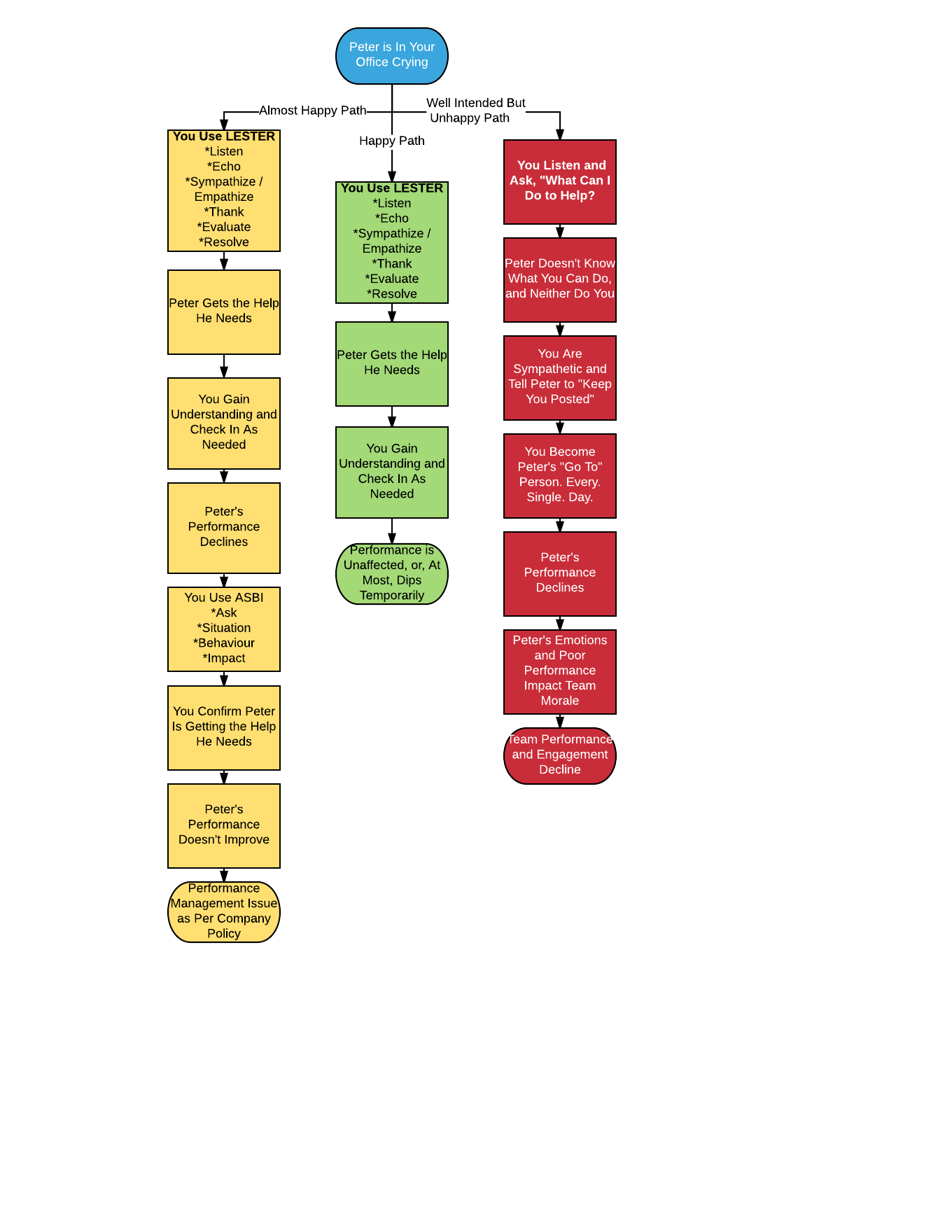Season Two, Episode Five. Podcast recap! (And if you missed the podcast, you can find it here.)
Podcast Recap: Season 2, Episode 5
Peter has come a long way. He’s taken your excellent feedback, worked hard to improve, and consistently meets and exceeds your expectations. In fact, you might go so far as to say he’s your “perfect” employee.
Thank goodness, because now you don’t have to give him feedback anymore and you can save all that time.
Right?
Wrong.
Star Employees Need Feedback Too
There’s not much that is more deflating to a high performer than suddenly feeling invisible or under valued. Sadly, this happens frequently – we reward our star performers with, what??? MORE WORK! We know they will do it and do it well, and then are surprised when they slip back into old habits or appear disengaged.
The truth is that ALL employees need feedback, even when you can’t find anything to criticize or improve. Why? Because feedback doesn’t have to be negative or constructive (and if that’s the way you view it, we encourage you to change that opinion).
Positive feedback, thoughtfully given and sensitively presented is ALWAYS A GOOD THING.
Three Things to Consider
Here are three common scenarios in which you might struggle to find the right kind of feedback to give to someone:
- The Over Achiever. This is the person who just wants more. All the time. They want more work, more challenges, and want to get better and better. They are the person sitting in your office BEGGING for feedback, and you’ve run out of things to tell them.
- What to do? Consider asking them to rate themselves on a scale of 1 to 10. Chances are they will NOT give themselves a 10 (because overachievers always want to improve). Regardless of how they rate themselves, you can ask them these questions, and let them come up with their own feedback!
- What are the positive things that contributed to this rating?
- What do you think you need to do to move the needle higher?
- What to do? Consider asking them to rate themselves on a scale of 1 to 10. Chances are they will NOT give themselves a 10 (because overachievers always want to improve). Regardless of how they rate themselves, you can ask them these questions, and let them come up with their own feedback!
- The Practically Perfect Person. Ah, Perfect Peter. He is solid, reliable, has achieved all the goals you have worked on together, is happy with the feedback he gets (and you know this because he told you, not because you assumed), and is just the kind of person everyone wants on their team. So what kind of feedback can you continue to provide? Well, maybe at this point it’s time to switch from feedback to a goals discussion. Perhaps he really is a 10, and now you need to move the needle. Consider setting professional and global goals (global goals are skills that are easily transferrable and often required to “move up” the career ladder or shift to a different role, e.g. presentation skills, facilitation skills, networking) and creating a new set of objectives on which you can give feedback.
- What would you like to do next? What skills are needed to achieve that?
- How can you share your skills with others? Are you interested in mentoring someone or allowing someone to job shadow you? Would you like to give a presentation?
- The Average Joe. This is your average, reliable, normal person, who requires a combination of positive feedback and recognition in order to remain engaged. Oh and guess what, positive feedback and recognition, while related, are not the same!
- Positive Feedback is giving specific details on how a person performed and how that performance impacted the team, the organization, you, or any other entity. Use ASBI to deliver that positive feedback in a meaningful way!
- Recognition thanks someone for their efforts and gives visible reward for their efforts. Remember that recognition does not mean the same thing to everyone – in fact it can go horribly wrong if you assume people like to be recognized the same way you do. The best tip? Ask the person!
Remember – employee engagement has been proven to directly impact an organization’s results. Don’t save your feedback discussions for times of trouble or assume that your team members are all happy and don’t need your positive feedback or recognition.
Take the time to find the positive things to reinforce and inspire the behaviour you want on your team. Then think about how best to deliver it, and take purposeful action to get it done.
Honestly it takes 5 minutes. And it lasts a lifetime.
Until next time,
Ruth.



 Give these tips a try, let us know how it went on Twitter at @whiteboardcons and check out the rest of our podcast series on our homepage at www.whiteboardconsulting.ca.
Give these tips a try, let us know how it went on Twitter at @whiteboardcons and check out the rest of our podcast series on our homepage at www.whiteboardconsulting.ca.

